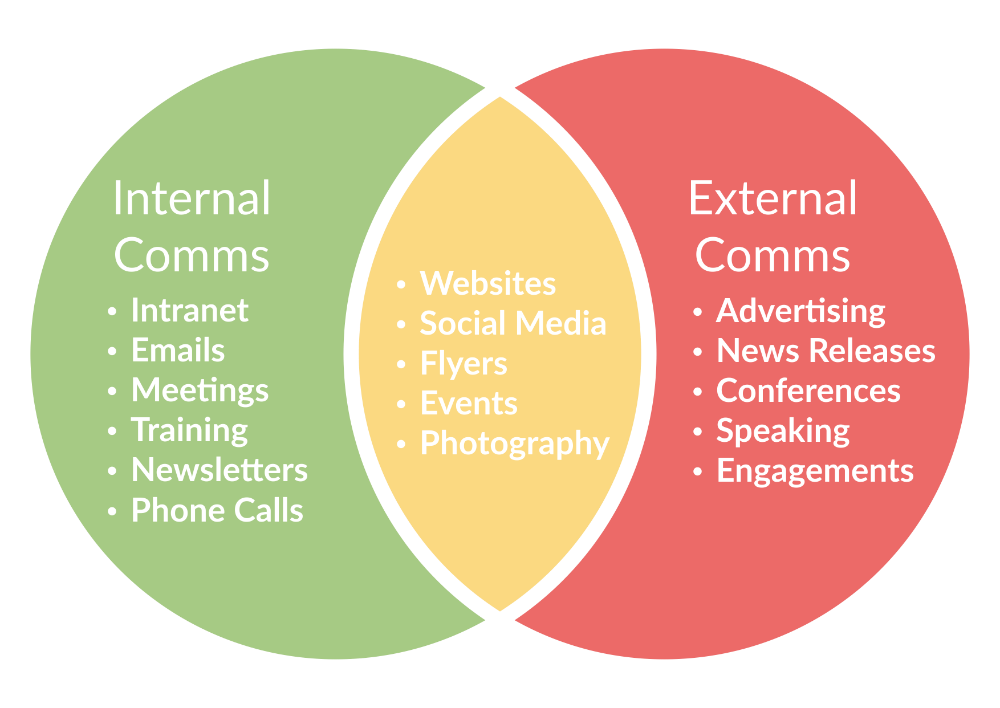How to Improve Business Communication Internally: A Comprehensive Guide

In the bustling world of business, effective communication is the lifeblood that keeps the heart of any organization beating. Imagine a company as a well-oiled machine; each cog, gear, and lever represents different departments, teams, and individuals. Without smooth communication, this machine can grind to a halt. So, how can you improve business communication internally to ensure your machine runs at peak efficiency? Let's dive in and explore the intricacies of internal dialogue, workplace communication, and their profound impact on employee engagement, business productivity, and corporate culture.
Understanding the Importance of Internal Business Communication
Effective internal business communication is not just about exchanging information; it's about fostering a culture of transparency, trust, and collaboration. According to a study by Towers Watson, companies with highly effective communication practices enjoy 47% higher total returns to shareholders compared to firms with poor communication. This underscores the critical role of internal dialogue in driving business success.
The Impact on Employee Engagement
Employee engagement is a direct outcome of effective internal communication. When employees feel heard and valued, they are more likely to be committed to their work and the company's goals. A Gallup survey found that engaged employees are 21% more productive and 87% less likely to leave their jobs. This highlights the importance of fostering a culture where open communication is the norm.
Boosting Business Productivity
Clear and concise communication can significantly enhance business productivity. Miscommunication can lead to costly errors, delays, and misunderstandings. By streamlining internal communication, you can ensure that everyone is on the same page, reducing inefficiencies and boosting overall productivity.
Strategies to Improve Internal Business Communication
Establish Clear Communication Channels
The first step in improving internal business communication is to establish clear and accessible communication channels. This could include email, instant messaging platforms, and project management tools. Each channel should have a specific purpose to avoid confusion and ensure that messages are delivered to the right people at the right time.
Foster a Culture of Open Communication
Creating a culture of open communication is essential for fostering trust and collaboration. Encourage employees to share their ideas, concerns, and feedback openly. Regular town hall meetings, open forums, and anonymous suggestion boxes can be effective tools for promoting open communication.
Utilize Technology for Seamless Communication
In today's digital age, technology plays a crucial role in facilitating seamless communication. Tools like Slack, Microsoft Teams, and Zoom can help bridge the gap between remote and on-site teams. These platforms not only enable real-time communication but also provide features like file sharing, video conferencing, and project management.
Implement Regular Training and Development Programs
Effective communication is a skill that can be learned and improved. Regular training and development programs can help employees enhance their communication skills. Workshops on active listening, effective writing, and presentation skills can be particularly beneficial.
Encourage Cross-Departmental Collaboration
Breaking down silos and encouraging cross-departmental collaboration is vital for improving internal communication. This can be achieved through interdepartmental projects, team-building activities, and regular updates on company-wide initiatives. When different departments work together, they gain a better understanding of each other's roles and challenges, fostering a more cohesive work environment.
The Role of Leadership in Internal Communication
Leaders play a pivotal role in shaping the communication culture within an organization. Effective leaders not only communicate clearly and consistently but also set an example for others to follow. They create an environment where open dialogue is encouraged and valued.
Lead by Example
Leaders should model the communication behaviors they want to see in their teams. This includes being transparent, approachable, and responsive. When leaders practice what they preach, it sets a positive tone for the entire organization.
Provide Regular Updates
Regular updates from leadership can help keep employees informed and engaged. This could include updates on company performance, upcoming projects, and changes in policies. Transparency builds trust and ensures that everyone is aligned with the company's goals.
Encourage Feedback
Leaders should actively seek feedback from their teams. This not only helps in identifying areas for improvement but also makes employees feel valued and heard. Regular feedback sessions, surveys, and one-on-one meetings can be effective ways to gather input.
Overcoming Common Communication Challenges
Addressing Miscommunication
Miscommunication can arise from various factors, including language barriers, cultural differences, and lack of clarity. To address this, it's important to use simple and clear language, provide context, and encourage questions. Regular check-ins can also help ensure that messages are understood correctly.
Managing Conflict
Conflict is a natural part of any workplace. Effective communication can help manage and resolve conflicts. Encourage open dialogue, active listening, and a focus on finding solutions rather than assigning blame. Mediation and conflict resolution training can also be beneficial.
Dealing with Information Overload
In today's fast-paced world, information overload is a common challenge. To manage this, prioritize communication and use different channels for different types of messages. Ensure that important information is highlighted and easily accessible.
Conclusion
Improving internal business communication is not just a nice-to-have; it's a must-have for any organization aiming for success. By establishing clear communication channels, fostering a culture of open dialogue, utilizing technology, and encouraging cross-departmental collaboration, you can significantly enhance employee engagement, business productivity, and corporate culture. Leaders play a crucial role in this process, setting the tone and providing regular updates and feedback. Overcoming common communication challenges requires a proactive approach and a commitment to continuous improvement.
So, are you ready to transform your internal communication and take your business to the next level? The journey may not be easy, but the rewards are well worth the effort. Remember, effective communication is the key that unlocks the door to a more engaged, productive, and successful organization.
FAQs
Why is internal business communication important? Internal business communication is important because it fosters a culture of transparency, trust, and collaboration. It enhances employee engagement, boosts business productivity, and contributes to a positive corporate culture.
What are some effective strategies for improving internal communication? Effective strategies for improving internal communication include establishing clear communication channels, fostering a culture of open dialogue, utilizing technology, implementing regular training programs, and encouraging cross-departmental collaboration.
How can leaders improve internal communication? Leaders can improve internal communication by leading by example, providing regular updates, encouraging feedback, and creating an environment where open dialogue is valued.
What are some common communication challenges in the workplace? Common communication challenges in the workplace include miscommunication, conflict, and information overload. Addressing these challenges requires clear and concise communication, active listening, and a focus on finding solutions.
How can technology help improve internal communication? Technology can help improve internal communication by facilitating real-time communication, enabling file sharing, and providing project management tools. Platforms like Slack, Microsoft Teams, and Zoom can bridge the gap between remote and on-site teams, ensuring seamless communication.


Belum ada Komentar untuk "How to Improve Business Communication Internally: A Comprehensive Guide"
Posting Komentar